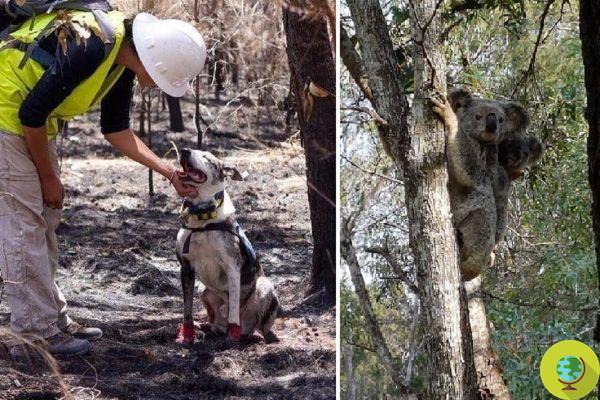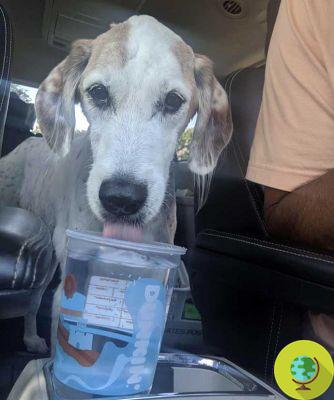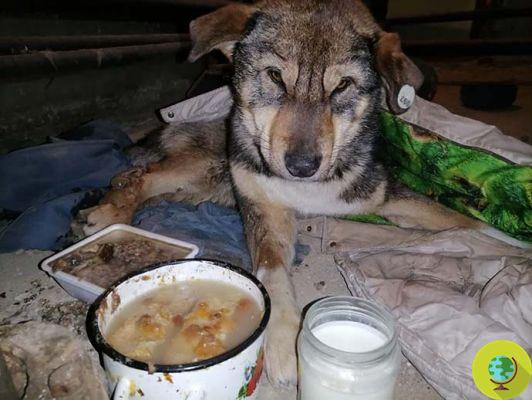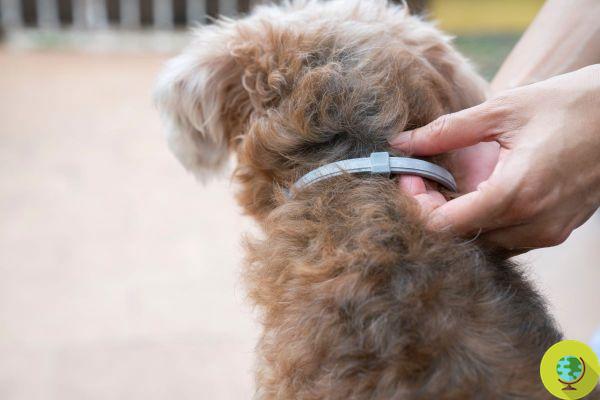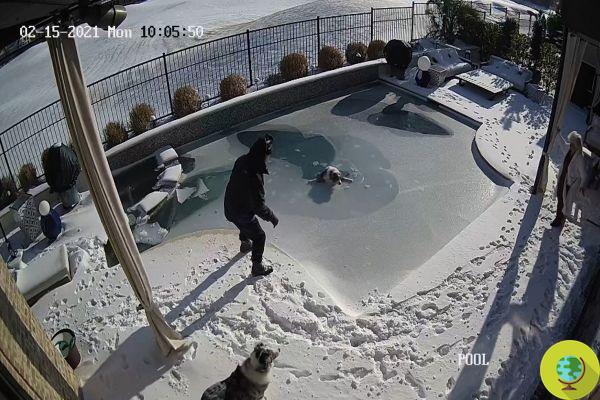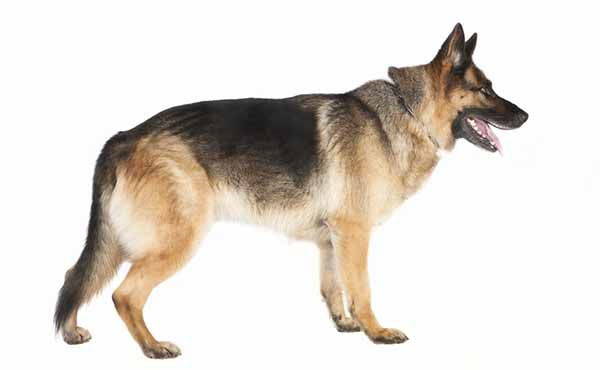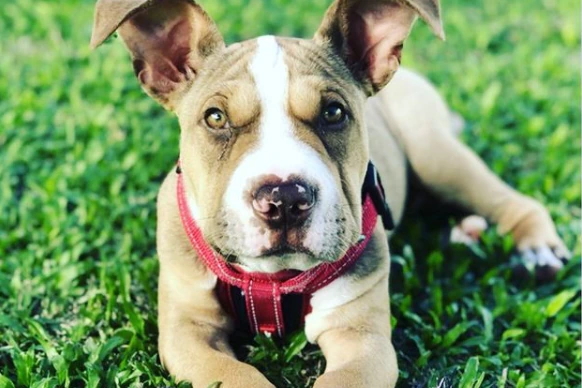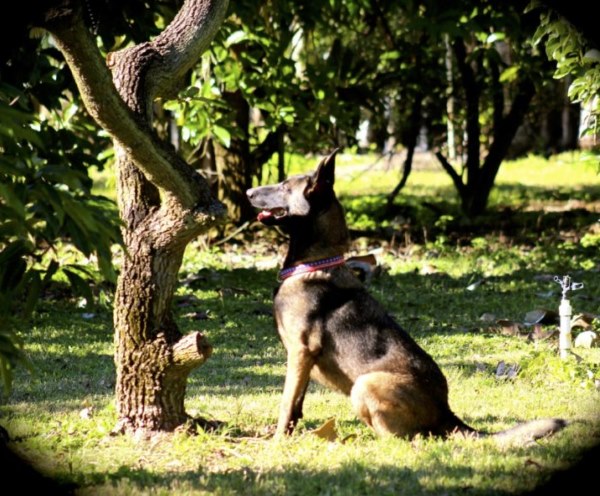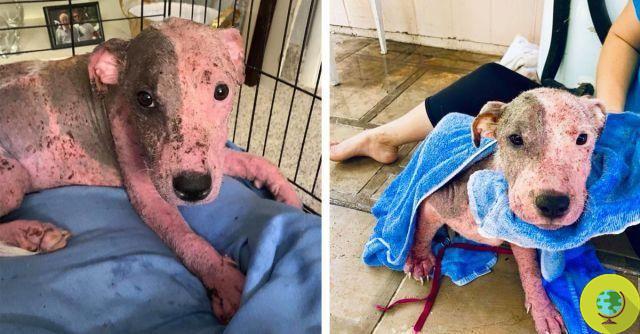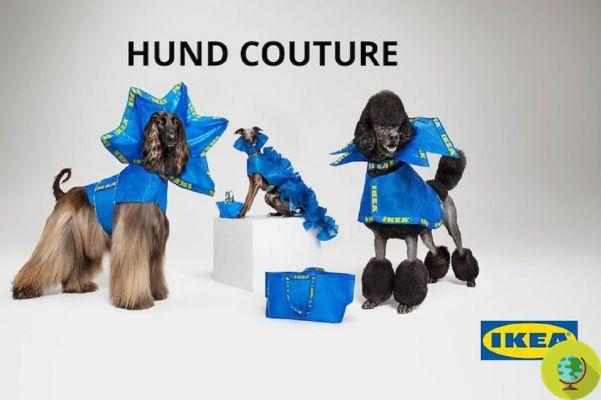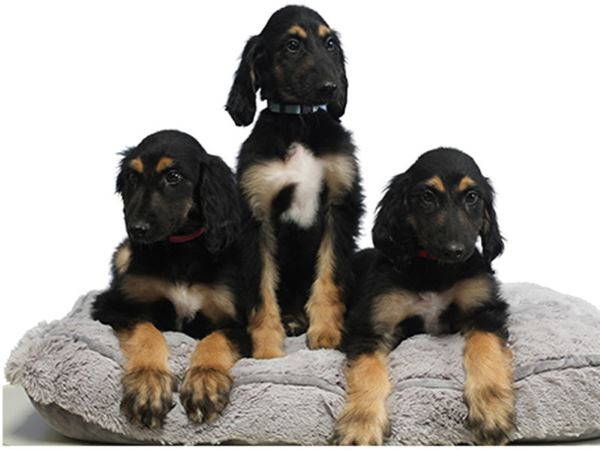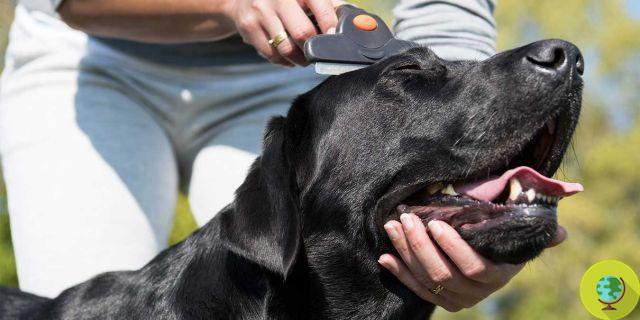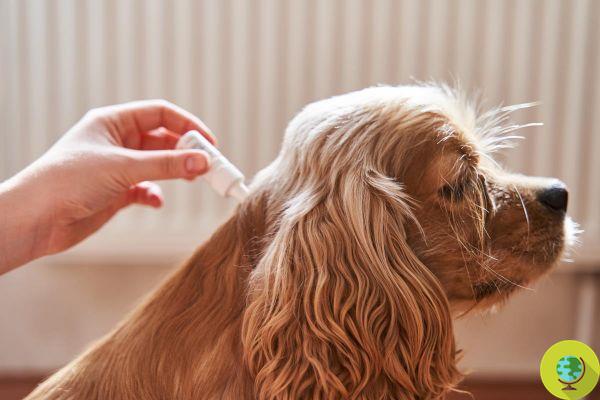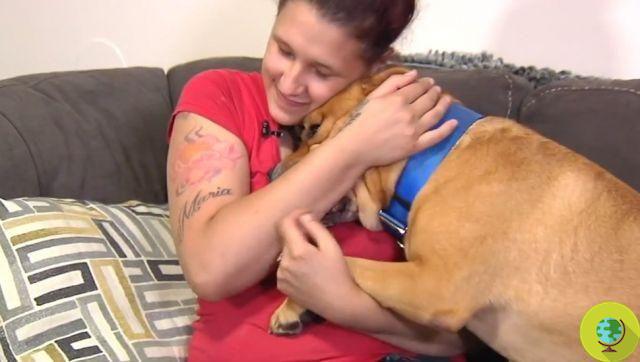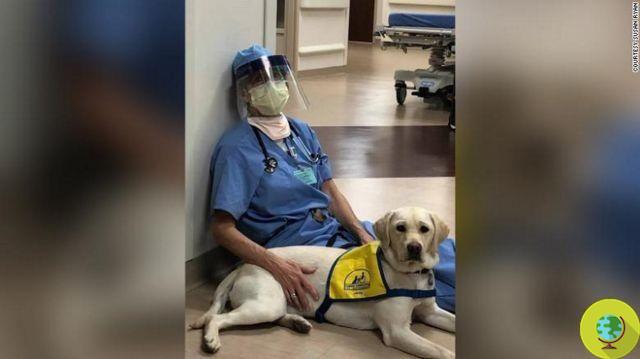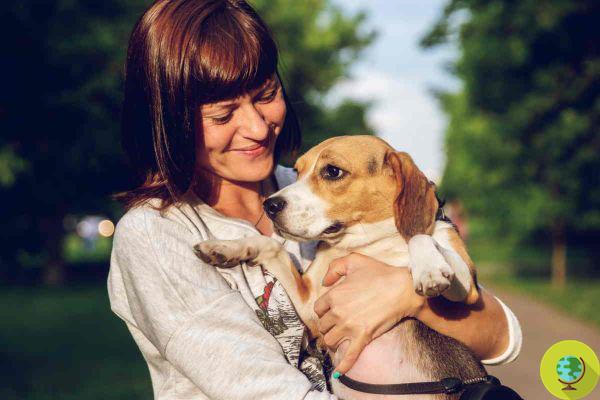All about the Newfoundland: what are the characteristics, the diseases to which it is predisposed and the main things to know before adopting one. Terranova, a dog that does not go unnoticed for its size and musculature, but also for its thick coat and beautiful character.
He is about to end up run over, his mother saves himLet's find out together what are its peculiarities and the diseases to which it is more predisposed, where it is possible to adopt one without buying it and get to know better this splendid breed of large dog
Index
Characteristics of the dog
The Newfoundland (Newfoundland) is a breed that hardly gets confused. It is in fact a large dog, massive and muscular, the females are generally longer but less massive than the males. Adult weight for males is around 60 70-kg while for females it does not exceed 55 kg, the height can reach about 70 cm for males and 66 cm for females. Despite its large size it is a very coordinated dog in its movements.
The head is broad and massive, the muzzle square and short with eyes (brown or black) which give the impression of being a bit small compared to the rest of the face. The apparently sad expression inspires a lot of sweetness.
Le ears they are relatively small and pendants while the tail is bushy and tends downwards if the dog is at rest while it is straight when in motion.
Il mantle del Terranova has the characteristic of being impermeable to water, its legs are webbed and it is able to use its tail to direct itself where it wants while it is in the water (it uses it as if it were a rudder), which is why it is an extraordinary swimmer.
In summary, the Newfoundland is:
- A large dog
- Massive and muscular
- Weight up to 70 kg
- Height up to 70 cm
- Square muzzle
- Brown or black eyes
- Small and hanging ears
- Thick and waterproof coat
- Webbed legs
- Bushy tail
Coat colors
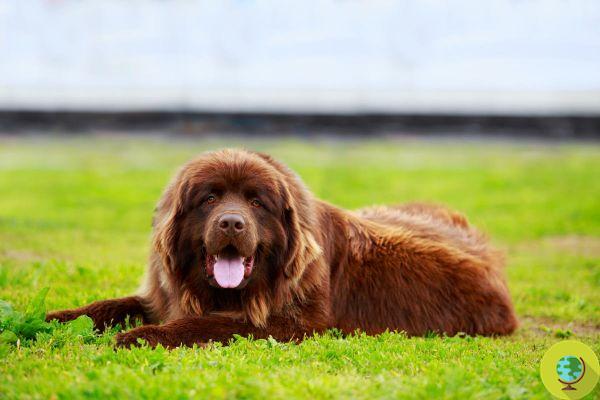
@deviddo/123rf
The most common Newfoundland is the one with the black coat but there are also the Brown Newfoundland and that white with black spots. In America, the one with the gray or bronze colored coat is also recognized as being of the same breed.
I Newfoundland puppies they have a very soft coat but with the growth the hair thickens a little and becomes more shiny. Precisely because the coat is very thick, it is necessary to brush it regularly from when the dog is small. As for the moult, this takes place twice a year at the arrival of summer and winter.
The origins of the breed
The origins of Newfoundland are to be found inNewfoundland Island (Canada) where the natives used this dog for their activities: hauling heavy loads, hauling fishing nets, carrying out water rescues, etc. In reality, there are several hypotheses on the real origin of this dog: there are those who think it was brought to America by Viking ships and is therefore a descendant of bear dogs, while others think it is an evolution of an Asian dog breed. arrived in America during the ice age.
The most accredited hypothesis is the one he believes the Newfoundland is a cross between the two aforementioned breeds that is the original one of the Vikings and the Asian one.
Character
The Newfoundland is a sweet and calm dog but at the same time lively, enterprising and stubborn. He gets along very well with human beings and immediately becomes attached to the person who takes care of him the most, even if he is basically sociable with everyone.
More than large spaces, as you might think, this dog needs contact with its owner. His size associated with his character have earned him the nickname of "gentle giant". It is also a very intelligent, reliable and loyal dog.
Definitely playful, even with children, he gets along well with other animals (including cats) if they are part of his family. For all these reasons it is absolutely not suitable for "guarding".
The Newfoundland is:
- Desserts
- Calm
- Perennial
- Enterprising
- Stubborn
- Go beyond
- Faithful
- Reliable
- Playful
- Gets along with everyone
Also given the size that reaches a Newfoundland is a lot important to educate him from a puppy good rules to keep at home, in relationships with others or outside.
Diseases of the dog
Like others purebred dogs, Newfoundland is also more predisposed to some congenital diseases such as hip dysplasia and elbow. These are malformations of the joints that grow and develop incorrectly.
In order to avoid these problems it is important to take care of the Newfoundland puppy correctly to ensure that it grows healthy and strong.
For example, it is essential to avoid fomenting his voracity by making him eat beyond measure and therefore predisposing him toobesity, risk factor for the development of dysplasias.
Other diseases to which the Newfoundland is prone and which can occur over the years are:
- diseases heart;
- eyelid disorders;
- lip infections.
- Given its thick coat, it is also easily subject to heat exhaustion.
Care and precautions to be maintained
The Newfoundland is a very large dog that needs one rich and balanced diet to make sure that he has all the nutrients necessary for his activities or to grow at his best if he is a puppy. On this, as on other aspects of dog care, it is always good to refer to a trusted veterinarian. It should always be remembered, however, that there are foods that are absolutely forbidden to all dogs, one of all, for example, chocolate. (Also read: What if your dog has inadvertently eaten some chocolate?)
It is also very important to make him drink a lot, as it is a drooling dog and tends to lose a lot of fluids.
As for its management it is very fundamental, especially if you do not have a large garden, take it out 3 times a day to give him the opportunity to walk and do his needs. It is also a dog that loves water very much (as we have already told you this breed is also used in rescues) and it would therefore be good to indulge, when possible, this passion and predisposition by doing it. swim in the sea.
Another key thing to know is that the Newfoundland needs to be brushed daily. Its mantle is in fact very thick and they risk getting stuck not only grass and brushwood but also insects including the dangerous forasacchi.
If you have a Newfoundland therefore remember to pay attention to:
- Nutrition
- Daily brushing
- Granting the right moments of outdoor life
- Consider a few trips to the sea
How and where to adopt a Newfoundland
As always, we advise you NOT to buy a dog But say adopt it. Even though the Newfoundland is a purebred dog, it is by no means impossible (as is often believed) to have it up for adoption. There may be several reasons why even a purebred dog is given away. Fortunately, there are "Rescue center"Generic or dedicated specifically to a breed, born with the aim of ensuring a new family for dogs left alone.
In the case of the Terranova we point out, for example, the Facebook group “Terranova Rescue” where it is possible to adopt dogs of this breed or crossbreeds.
Veterinary advice
We asked Patrizia Sauria, veterinarian, to tell us a little about the characteristics of the Terranova and to give us some useful information to take better care of it. Here's what he told us:
“When you decide to adopt a large dog, like a Newfoundland, you ask yourself the question 'Do you suffer from living in an apartment?' The correct answer is 'It depends': a dog is a social animal, and especially those of this breed love to be with the owner; the ideal solution would be to have a garden, but the Newfoundland it also adapts very well to apartment living, not necessarily too big, but that allows him to move without difficulty; the important thing, however, is that he is taken out for his classic walks at least 2 or 3 times a day, the time necessary to move and play. However, one must not exceed in physical effort, especially in the puppy, since it is a breed predisposed to hip and elbow dysplasia (and therefore to osteoarthritis from a young age) ".
How can we take care to the best of a Newfoundland?
“He is a rescue dog, this instinct of his is written in his DNA; it's a 'lifeguard dog'par excellence, it would therefore be nice to give him the opportunity to swim, perhaps during a trip to the sea. It is a long-haired dog, so it is essential brush it often, both to avoid the formation of knots and to remove dead cells, dust or plant residues (pay particular attention to forasacchi, capable of migrating very easily, with very serious consequences); must therefore get him used to being brushed since he was a puppy, so that it becomes a habit for him too and not a cause of stress. Important the flea and tick prophylaxis, whose presence is difficult to control in a dog with such a thick coat ".
As for nutrition what advice can you give us?
“It is essential that nutrition be well balanced, especially in the puppy: a good quality commercial food is recommended, where all the nutrients are well balanced with each other, in order to fully cover all the dog's nutritional needs; in this case it is not recommended Than we a calcium supplement, as even an excess of this mineral can have negative implications on the skeletal development of the animal during the growth phase. You could also opt for a home diet, but in order not to run into nutritional deficiencies, it is essential to be followed by a good veterinarian. The daily ration must be divided into at least 2 times a day, especially for a large dog that may experience gastric dilation / torsion. Do not exceed the doses as an obese dog more easily develops some diseases related to excess weight; furthermore, obesity in a puppy causes his bones to grow deformed. Fresh water must always be available (it is a dog that drools a lot and therefore must also replenish lost fluids) ".
And what about character?
"It's a dog very intelligent and very fast learning, but also a bit stubborn, so it is important to educate him as a puppy ".
Curiosities about the Newfoundland
Many well-known personalities had a Newfoundland, among them we remember Napoleon and Lord Byron, the latter was so fond of his Terranova Boatswain that he even dedicated an epitaph on his grave to him.
Please note that the dog is not a toy and that if you make a commitment to make him become a member of your family then you must have the time and desire to take care of him. We certainly do not want to discourage you, but to make you understand that loving a dog is a responsibility that gives so much joy, but which also requires patience and commitment.
Since the Newfoundland is also a large breed dog with some special needs, this is even more true!
To learn more about other dog breeds, read also:
- Hound
- German Shepherd
- Rottweiler
- French Bulldog
- Cane Corso
- Pitbull
- border collie
- Beagle
- Carlino
- Golden Retriever





